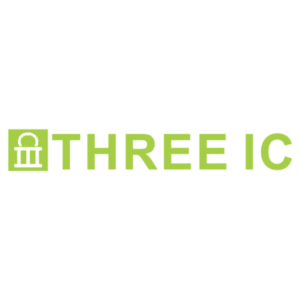

It is often said that one’s past can pave the way to a better future. In the realm of cybersecurity, this notion stands tall. Understanding malware and its threats can provide lessons to arm ourselves against future cyber onslaughts. Throughout history, numerous businesses and organizations have fallen victim to infamous malware attacks. By examining these examples, we will know how to prevent malware and can pinpoint the measures necessary for preventing malware attacks and securing our data.
In the vast cyber landscape, ‘malware’ is a word that has carved a niche for itself. It’s a shorthand, referring to ‘malicious software.’ The term serves as a big umbrella under which lurks an assortment of malicious programs such as viruses, worms, Trojans, and ransomware. Each one of these entities is carefully engineered to attack and wreak havoc – cause damage, create disruption, or gain unauthorized access to defenseless computer systems.
Now a worrying trend has emerged – the marked escalation in the sophistication of cyber attacks. It is essential that businesses, big and small, realise that a solid defense begins with deep comprehension. Only through this understanding will they equip themselves with the knowledge and tools necessary to mitigate the looming threats in the digital landscape.
Malware can infect systems in numerous ways. Common methods include phishing, where attackers trick individuals into revealing sensitive information; USBs, where malware is transferred from an infected device to a computer; compromised websites, where visiting a specific site triggers a malware download; infected files, where malware is attached to a file or program; and network infiltration, where malware exploits vulnerabilities to infect a network.
Upon activation, malware is akin to a clandestine saboteur within your computer system, carrying out a variety of harmful activities. Its purpose can vary widely based on the specific type of malware and the intentions of the attacker. Here’s a breakdown of some of the main actions malware could take once it springs into action:
Understanding these potential threats is a crucial part of maintaining a robust cybersecurity posture.
In this section, we’ll share some infamous instances that highlight the destructive power of malware, the ingenuity of cybercriminals, and the importance of robust cybersecurity:
Clop targeted the software firm Accellion in 2021, capitalizing on vulnerabilities in their file transfer appliance. The resulting damage was felt by multiple organizations, including Asia’s prominent telecom company Singtel and the Reserve Bank of New Zealand, with the financial fallout running into millions.
DarkSide’s infamy grew when it paralyzed the Colonial Pipeline, precipitating a fuel supply crisis in the southeast of the United States. This ransomware attack cost the company a staggering $4.4 million in ransom.
Emotet was a formidable global cybersecurity adversary responsible for extensive disruptions. The FBI approximated Emotet-related damages to be close to $2 billion.
This highly contagious ransomware took the cyber world by storm in 2017, inflicting global damages approximated at $10 billion. Among those hit hard were Merck, Maersk, and the Chernobyl nuclear power plant.
The WannaCry ransomware attack of 2017 affected hundreds of thousands of computers across more than 150 countries, causing damages that potentially amounted to $4 billion. The UK’s NHS was significantly disrupted, leading to substantial healthcare service interruptions.
This potent cyberweapon, reportedly developed by the U.S. and Israel, severely undermined Iran’s nuclear program in 2010.
A vulnerability in a web application led to the leakage of personal data for approximately 147 million consumers. Equifax was compelled to agree on a settlement of at least $575 million.
This malware was designed to transform networked devices running on Linux into remotely controlled bots for large-scale network attacks. In 2016, it triggered a colossal Internet outage that affected major websites, including Twitter, Netflix, and CNN.
Making its first appearance in 2016, Locky ransomware propagated via phishing emails, and at its zenith, it’s believed that up to 90,000 systems were infected each day.
This incident involved the theft of data from up to 40 million credit and debit cards. Target was left with no choice but to agree to an $18.5 million settlement with various U.S. states.
In 2013 and 2014, Yahoo suffered the largest data breach in history, with every single Yahoo account compromised. The company paid $50 million in damages and provided two years of credit monitoring services to 200 million people.
This destructive attack resulted in the theft and leakage of films, scripts, private emails, and personal employee data, causing an estimated $15 million in damages.
This significant vulnerability in OpenSSL allowed hackers to access sensitive data from hundreds of thousands of web servers.
This exploit in Windows, leaked from the NSA, played a major role in the WannaCry and NotPetya attacks.
This incident exposed the data of 32 million users of the site, resulting in a settlement of $11.2 million by the company.
Through these examples of malware attacks, the monumental scale and variety of the cyber threats faced by businesses today becomes apparent. Ranging from ransomware that cripples critical infrastructures to viruses that tear through global networks, these incidents serve as potent reminders of the dire need for comprehensive security safeguards. By understanding the potential impact of these examples and learning from them, we arm ourselves better for the continuous fight against malware attacks. It accentuates the importance of a trustworthy security partner like THREE IC, which offers crucial support in this ceaseless battle against cyber malice.
In the complex world of cybersecurity, the task of detecting and removing malware is not one-dimensional but rather multifaceted. It requires an amalgam of unwavering vigilance, robust systems, and often, the guiding hand of an expert IT consultant. Let’s dive into some key indicators that suggest your system might have fallen victim to a malware attack:
Once you’ve identified a potential malware infection, it’s crucial to spring into action to purge the threat. Here’s how to go about malware detection and removal:
Remember, prevention of attacks trumps cure. Navigating the complex process of removing malware isn’t your only option. Fending off malware attacks from the outset is the most effective strategy. To help fortify your systems and foster peace of mind, consider THREE IC’s ransomware solution services.
Preventing malware infections is critical for maintaining secure and efficient operations. Here are some best practices and strategies on how to prevent malware:
By taking these proactive steps, businesses can significantly reduce the risk of a damaging malware attack. Remember, cybersecurity is a continual process that requires ongoing vigilance and adaptation to the evolving threat landscape.
Malware poses a significant threat to businesses worldwide. As we’ve explored through various examples of malware, the damage caused by these attacks can be catastrophic. However, by understanding the nature of malware, how it infects systems, and how it operates once active, businesses can take proactive steps toward prevention.
THREE IC is committed to helping businesses understand, detect, and prevent malware attacks. With our robust ransomware solution and comprehensive IT support services, THREE IC is an ideal partner and IT consultant for businesses seeking to fortify their defenses against cyber threats. Don’t wait for the next attack. Be proactive and protect your business today – contact our experts to learn more about THREE IC’s range of cybersecurity services.

THREE IC, a prominent provider of Cyber Security and IT solutions, produces the majority of the blog posts featured here. These articles are authored by a team of professionals employed at THREE IC, including content writers and marketing experts. They are dedicated to creating informative content on a wide range of subjects that are relevant to our readers.
Our team ensures that the published articles are accurate and beneficial for our clients and partners, helping them stay informed about the latest trends in Cyber Security and IT and understand how these advancements can benefit their organizations.

address
address
TEL
+65 XXXX XXXX
info@threeic.com
address
Singapore Address here
address